2011 EWB Challenge Design Brief - Engineers Without Borders UK
2011 EWB Challenge Design Brief - Engineers Without Borders UK
2011 EWB Challenge Design Brief - Engineers Without Borders UK
You also want an ePaper? Increase the reach of your titles
YUMPU automatically turns print PDFs into web optimized ePapers that Google loves.
PART II – SUPPORTING INFORMATION<br />
7 Pitchandikulam Forest<br />
The city of Auroville was founded in 1968, and Pitchandikulam is one of its communities. Approximately 200 years ago the Auroville Plateau was<br />
covered in scrub jungle and herds of elephants roamed the area. During the 1820’s trees were felled to drive away the tigers. The last remaining forests<br />
were cut down in the 1950’s for timber to make boats. Today the indigenous vegetation of the area, the Tropical Dry Evergreen Forest (TDEF), is only<br />
found in isolated reserve forest patches and in small remnants of sacred groves around temples. It is one of the rarest ecosystems in India.<br />
Pitchandikulam is an area of 28 hectares within the green belt of Auroville. The first Aurovillian settlers found the land dry and desolate; prior to 1973<br />
only a few scattered palm trees were found in the area and the traditional dry land farming of peanuts and pulses had degraded the soil leaving deep<br />
eroded gullies. In that year, restoration processes were set in motion using green manures to rebuild the soil. Live fences were created to protect the<br />
land from goats and cows, and pioneer species of acacia, leucaena, gliricidia, and eucalyptus were planted to provide windbreaks and shade. At the<br />
same time seeds and other plant materials were introduced from nearby remnant patches of the almost extinct Tropical Dry Evergreen Forest, and<br />
nurseries were set up.<br />
Now Pitchandikulam is a peaceful sanctuary of self-generating forest with a diverse array of flora and fauna. There has always been a strong emphasis<br />
on conservation of indigenous plant species with a particular focus on medicinal plants and the people who use them.<br />
In 1993 Pitchandikulam Forest became part of a national Medicinal Plant Conservation Network, co-ordinated by the Foundation for Revitalisation<br />
of Local Health Traditions (FRLHT) in Bangalore. Collaborating with 30 other in-situ and ex-situ conservation areas, detailed programs of botanical<br />
and social documentation, conservation and planting initiatives have been developed. Through community outreach activities as well as delivering<br />
innovative education methods in the schools of the bioregion, Pitchandikulam Forest provides models of sustainable ecological practices. Traditional<br />
knowledge and technologies of the local people are being documented, displayed and woven into the Pitchandikulam landscape. A team of botanists<br />
and community activists work from Pitchandikulam on several projects to restore the indigenous forest and the traditional knowledge related to the<br />
local ecosystem.<br />
Today Pitchandikulam Forest is dedicated to the preservation and restoration of the Tropical Dry Evergreen Forest. Since the organisation began<br />
working on the restoration of the forest 70 acres of land has transformed into a complete ecosystem with more than 800 species of plants. The Bioresource<br />
Centre with its library, database, artefacts and photo displays provides a focus for the teaching of restoration ecology, environmental science,<br />
and the identification and use of indigenous medicinal plants. A major focus of Pitchandikulam Forest is community outreach, with the organisation<br />
currently working in 25 villages throughout the Kaliveli bioregion (History, 2010).<br />
Pitchandikulam Forest is engaged in the following initiatives:<br />
24 25


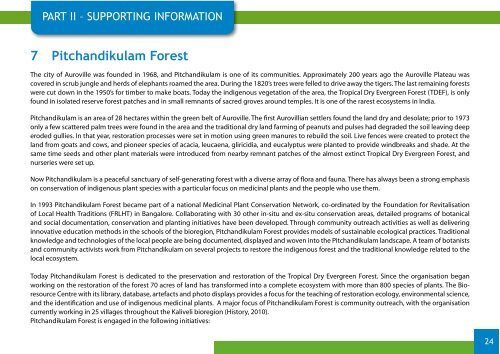
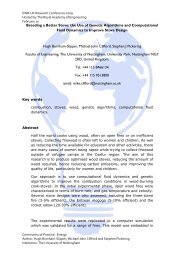

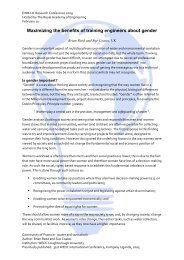
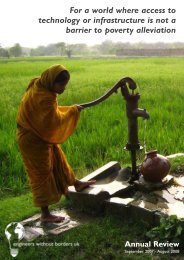
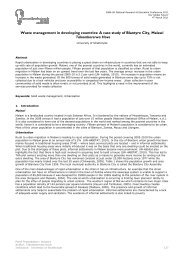
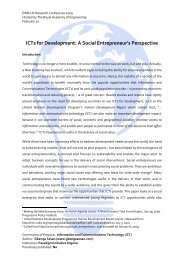
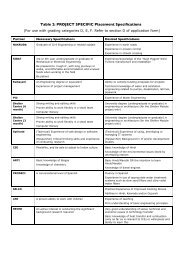

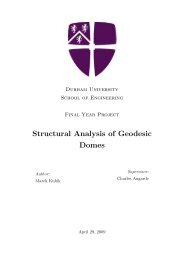
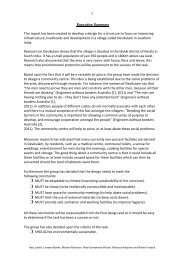


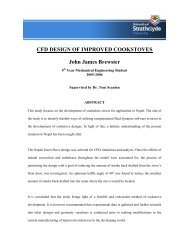
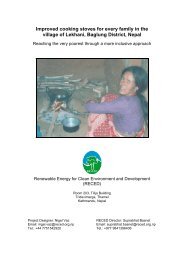
![Ethical Fundraising Guidance[1].pdf - Engineers Without Borders UK](https://img.yumpu.com/36288951/1/184x260/ethical-fundraising-guidance1pdf-engineers-without-borders-uk.jpg?quality=85)